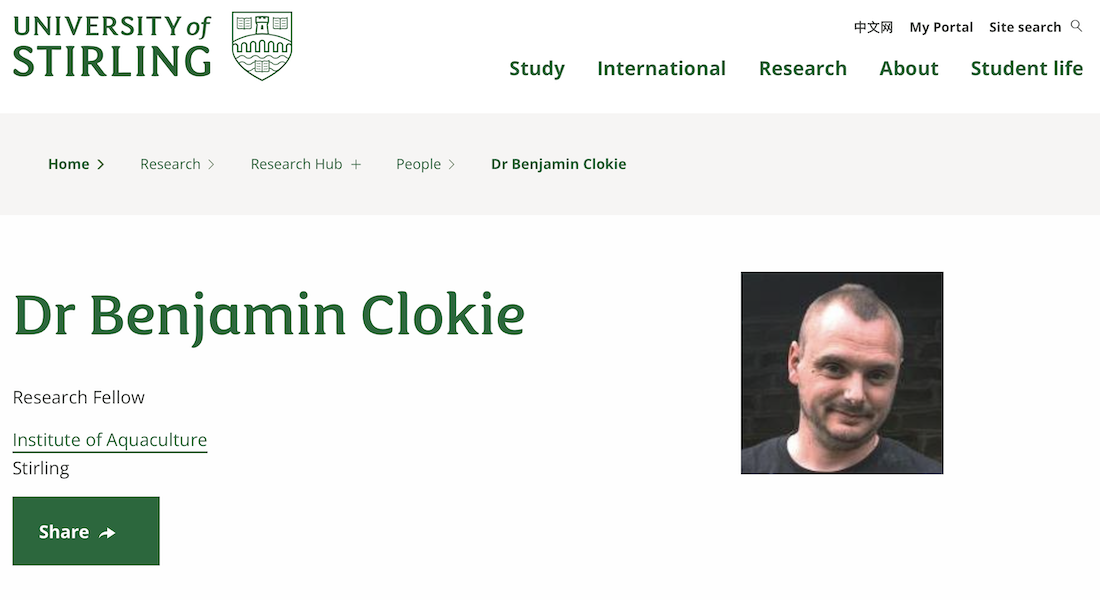Seminar by Dr Benjamin Clokie

We have the great pleasure of having Dr. Ben Clokie visiting us from Institute of Aquaculture, University of Stirling.
He will give a talk on February 15 from 1-2 PM in room 7.1.46 (Building 7, 1 floor, room 46)
Impact of net cleaning on Atlantic salmon, Salmon salar, gill health.
Abstract:
Sustained intensification of salmon aquaculture has resulted in the industry facing a myriad of challenges especially in the seawater grow-out stage where net biofouling provides a crucial obstacle for the global salmon industry. A diverse range of organisms can be found on on cage nets including the hydroid Ectopleura larynx, the amphipod Jassa falcata, blue mussel Mytilus edulis, and algae Saccharina latissima and Polysiphonia stricta. Net occlusion not only reduces water quality by limiting water exchange, reducing oxygen levels and waste removal there is also the potential to reduce the efficacy of cleaner fish by offering alternative food sources. Biofouling also impacts cage infrastructure, increasing pressure on mooring loads and reducing the net pen volume though deformation. Mitigation relies upon the use of antifouling net coatings or in situ cleaning with the later performed by remotely operated cleaning rigs coupled with high pressure spinning jets. Net cleaning may occur as frequently as every two weeks, dependent upon biofouling accumulation rates, cultured species requirements, and net coating. During cleaning, flushed particles are discharged directly into the surrounding environment within and around the cage leading to concerns regarding the impact on gill health.
In this project we sought to determine the impact of this procedure on gill health with particular relevance to the microbiome. Identification was performed using a novel library protocol that included a titration step prior to building 16S rRNA libraries that was optimised for low 16S copy samples.
Data obtained from these trials showed marked differences on the gill surface bacterial communities in response to treatment before and after cleaning driven by a reduction in richness. Evenness was maintained between sampling events with further analysis showing an increase in opportunistic and potentially pathogenic bacteria. Gill microbial dysbiosis may be attributed to physiochemical changes in the water quality and other biological changes related to the net cleaning event and have potential to increase the acceptability to infection. Our data relies upon a robust method for analysing microbiome diversity and provides an important tool for using the microbiome as an informative indicator of fish gill health and could be used to define when appropriate interventions are utilised.

